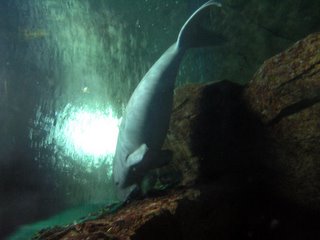
If you are looking for a very cheap trip similar to the comedy set of the show 'Gilligan's Island,' then Ishigaki, Okinawa, is the place to go.
Ishigaki is located about 260 miles southwest of Naha, Okinawa. It takes approximately 45 minutes to get there from by plane. It is one of the 49 populated islands of the 159 islands of Okinawa and has about 45,000 people.
Most people can drive around Ishigaki by car in about three hours. About 15 minutes after leaving the airport, you will forget about the city and be surrounded by mountains, caves, sugar cane fields, green pastures full of cattle and beautiful beaches with clear, blue water.
The boat tours to several islands surrounding Ishigaki are worth every second and yen. The average price for an eight-hour tour is 10,000 yen, which includes lunch. The Ishigaki port has several large boats with seats similar to those in an airplane. You simply walk across the street from the port and purchase tickets for different types of tours. Each tour differs in the number and type of islands that you would like to visit. One of the best tours is the three-island visit to Iriomote, Yubu and Taketomi.
After a slow 10-minute ride on the boat from the port, the captain will unexpectedly hit the gas, sending you on a boat ride that feels like a professional speed boat race. Add rough seas to this ride and you feel like your in flight every 10 seconds.
It takes about 40 minutes to get to the island of Iriomote, which has a population of about 2,000. From here, you will ride a slow riverboat and travel through the Urauchi-gawa river, which is the largest river in the Okinawa prefecture. The tour guide speaks Japanese, but that should not hinder those seeking a beautiful ride through the mountains and awkward looking trees, which have large fungi-type roots rising above the water.
Once the boat tour is complete, you catch a 20-minute bus ride to the other side of the island. When you start to come down the mountain to the other side, you will see what appear to be small huts on the water. It is an amazing site.
Once you arrive, you will find that they are small huts, but they are filled with tourists who are being pulled by water buffalos to the tiny island of Yubu. What makes this ride even better is the sounds of laughter and singing in each cart.
Some cart guides play the Okinawan Sanshin while singing popular Okinawan songs, while others tell jokes about how the stubborn behavior of some bulls.
Once lunch on Yubu is complete, you ride back to the high-speed boat and head to Taketomi, which has a population of about 300. You will be able to see the famous star-shaped sand, ride a water buffalo cart through the city or see how they use tree bark to make their clothes.
Other popular stops on Ishigaki include the Hirakubo lighthouse, Toujin Grave, Sukuji beach, Yonehara palm tree groves, Banna Park and the Yonehara beach.
The Information Tours and Travel office offers packages to Ishigaki's Club Med Kabira, ranging from $400 to $600 in price for three nights and two days. The Club Med resort price covers the airfare, accommodation, food, drink, sporting activities and entertainment.
The ITT office can also help you plan a day trip to the islands surrounding Ishigaki. That could include finding a rental car company or finding out how to buy a ticket to get on the boat tours.
For more information on Ishigaki and the surrounding islands, visit the Hirata Web site at
hirata-groupsource:Okinawa Marine


















